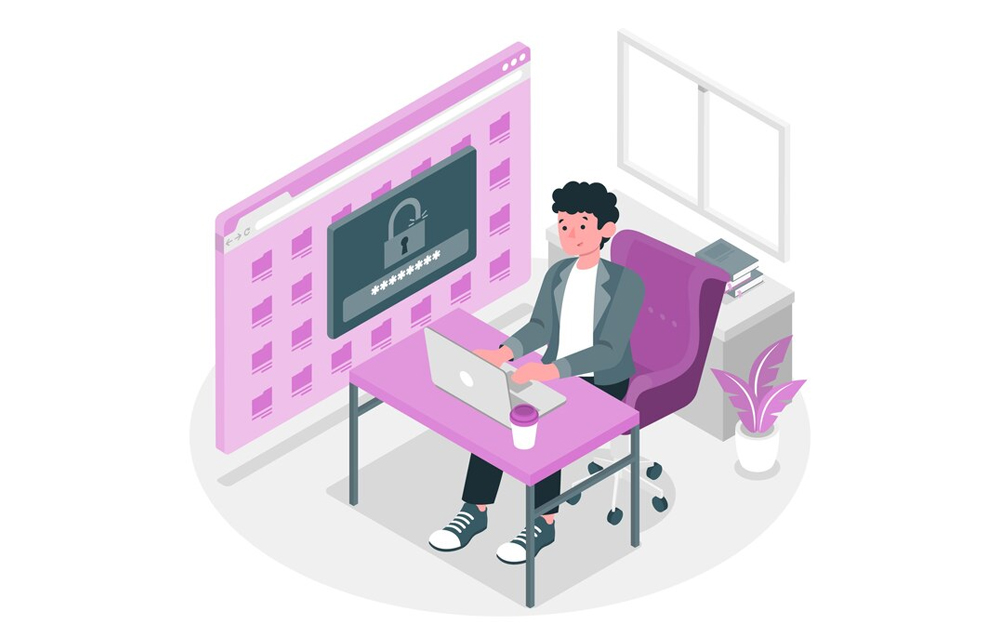Introduction
Virtual Assistants (VAs) play a critical role in managing sensitive and essential data for clients across various sectors. As businesses increasingly depend on VAs for administrative and operational support, ensuring the security of this data has become paramount.
This blog will delve into best practices and protocols for ensuring data security in virtual assistance. We’ll cover essential topics such as strong authentication methods, data encryption, secure storage solutions, regular system updates, data backup strategies, employee training, and monitoring practices. By adopting these guidelines, virtual assistants can create a secure working environment that protects client data and reinforces the reliability of their services.
Understanding Data Security Challenges
As Virtual Assistants manage a variety of sensitive and confidential information, understanding the data security challenges they face is crucial for implementing effective protection measures. This section explores the common threats and regulatory considerations that impact data security in virtual administration.
1.1. Common Threats to Data
1. Phishing Attacks:
- Description: Phishing attacks involve fraudulent attempts to obtain sensitive information such as usernames, passwords, or financial details by masquerading as a trustworthy entity via email, phone, or other communication channels.
- Impact: Successful phishing attempts can lead to unauthorized access to accounts, data breaches, and financial loss. These attacks exploit human vulnerabilities and often bypass technical security measures.
2. Malware and Ransomware:
- Description: Malware refers to malicious software designed to damage or gain unauthorized access to systems. Ransomware is a type of malware that encrypts a victim’s data and demands payment for decryption.
- Impact: Malware can compromise the integrity and confidentiality of data, while ransomware can result in significant financial loss and operational disruption. Both threats can severely impact the security of virtual admin operations.
3. Unauthorized Access and Data Breaches:
- Description: Unauthorized access occurs when individuals gain access to systems or data without proper authorization. Data breaches involve the exposure or theft of sensitive information due to security failures.
- Impact: These incidents can lead to loss of client trust, legal consequences, and financial penalties. Unauthorized access often results from weak authentication or insufficient access controls.
1.2. Regulatory Compliance and Legal Requirements
1. Overview of Relevant Regulations:
- General Data Protection Regulation (GDPR): This European regulation mandates how personal data should be protected and provides guidelines for data handling, consent, and data subject rights. It applies to organizations that handle data of EU residents.
- California Consumer Privacy Act (CCPA): This U.S. regulation provides California residents with rights to access, delete, and opt-out of the sale of their personal data. It requires businesses to implement measures to protect personal information.
- Health Insurance Portability and Accountability Act (HIPAA): This U.S. law governs the privacy and security of health information. It applies to entities handling healthcare data and requires stringent security measures.
2. Consequences of Non-Compliance:
- Fines and Penalties: Failure to comply with data protection regulations can result in substantial fines and penalties. For instance, GDPR violations can incur fines up to 4% of annual global revenue or €20 million, whichever is higher.
- Legal Actions and Litigation: Non-compliance can lead to lawsuits from affected individuals or regulatory bodies. This can result in costly legal battles and damage to the organization's reputation.
- Reputational Damage: Data breaches or non-compliance issues can damage the reputation of both the VA and their clients. Rebuilding trust can be challenging and time-consuming.
Implementing Strong Authentication Measures
Strong authentication measures are fundamental in protecting sensitive data from unauthorized access and potential breaches. For Virtual Assistants (VAs), implementing robust authentication protocols is essential for securing client information and maintaining operational integrity. This section explores key strategies and technologies for effective authentication.
2.1. Multi-Factor Authentication (MFA)
1. How MFA Works:
- Definition: Multi-Factor Authentication (MFA) requires users to provide two or more verification factors to gain access to a system or application. This adds an additional layer of security beyond just a username and password.
- Types of Factors: MFA typically involves:
- Something You Know: A password or PIN.
- Something You Have: A physical device like a smartphone or hardware token.
- Something You Are: Biometric data such as fingerprints or facial recognition.
- Benefits: MFA significantly reduces the risk of unauthorized access, as gaining entry requires multiple forms of verification. Even if one factor is compromised, the additional layers of security help protect the account.
2. Implementing MFA Across Systems:
- Application Integration: Ensure that all critical applications and systems used by VAs have MFA enabled. This includes email accounts, cloud storage, and financial systems.
- User Education: Provide training on how to use MFA tools effectively. Educate users about the importance of MFA and how to set it up on their devices.
- Monitor and Support: Regularly monitor MFA usage and address any issues or user concerns. Ensure that MFA solutions are up-to-date and functioning correctly.
2.2. Strong Password Policies
1. Guidelines for Creating Strong Passwords:
- Complexity Requirements: Passwords should be complex, including a mix of uppercase and lowercase letters, numbers, and special characters. Avoid using easily guessable information like birthdays or common words.
- Length and Uniqueness: Encourage the use of long passwords (at least 12 characters) and avoid reusing passwords across multiple accounts. Long, unique passwords are harder to crack.
- Password Managers: Recommend the use of password managers to generate and store complex passwords securely. Password managers help maintain unique passwords for different accounts without the need to remember each one.
2. Regular Password Updates:
- Password Expiry: Implement policies requiring regular password changes (e.g., every 60 to 90 days). This limits the potential damage from compromised passwords.
- Password Recovery Procedures: Establish secure procedures for password recovery or reset requests. Ensure that recovery methods are protected by additional security measures.
3. Password Management Tools:
- Tool Selection: Choose reputable password management tools that offer strong encryption and secure storage. Look for features like password generation, secure sharing, and synchronization across devices.
- Training and Implementation: Provide guidance on how to use password management tools effectively. Train users on best practices for managing and sharing passwords securely.
2.3. Additional Authentication Measures
1. Biometric Authentication:
- Types of Biometrics: Use biometric authentication methods such as fingerprint scanners, facial recognition, or iris scans to enhance security. Biometric data is unique to everyone, providing a strong layer of identity verification.
- Implementation: Ensure that biometric authentication systems are integrated with existing security infrastructure. Be aware of privacy considerations and secure storage of biometric data.
2. Hardware Tokens:
- Description: Hardware tokens are physical devices that generate time-based or event-based one-time passwords (OTPs). They add an additional factor of authentication beyond what is provided by passwords alone.
- Usage: Distribute hardware tokens to users who need them for accessing critical systems. Ensure that tokens are securely managed and protected from loss or theft.

Educating and Training Team Members
Educating and training team members is critical for maintaining a high standard of data security within a virtual administrative environment. Effective training helps employees recognize potential threats, understand security protocols, and apply best practices to protect sensitive information. This section outlines key components of a comprehensive security education program.
6.1. Security Awareness Training
1. Key Training Topics:
- Recognizing Phishing Attempts: Train team members to identify phishing emails and messages, which often appear to be from legitimate sources but are designed to steal credentials or install malware.
- Handling Sensitive Data: Educate employees on proper handling and storage of sensitive data, including personal information, financial records, and proprietary business information.
- Safe Internet Practices: Provide guidelines on safe browsing habits, such as avoiding suspicious websites, not downloading unverified attachments, and using secure connections (e.g., HTTPS).
- Password Management: Teach the importance of creating strong, unique passwords and using password management tools. Stress the risks associated with password reuse and weak passwords.
2. Delivery Methods:
- Interactive Workshops: Conduct live workshops or webinars where employees can engage with security experts, ask questions, and participate in real-time discussions about security issues.
- Online Training Modules: Use e-learning platforms to provide interactive, self-paced training modules. These can include quizzes, simulations, and scenario-based learning to reinforce key concepts.
- Regular Updates and Refresher Courses: Offer periodic training updates to address emerging threats and refresh employees' knowledge. Keeping training current ensures that employees stay informed about the latest security trends.
3. Evaluating Training Effectiveness:
- Assessments and Testing: Use quizzes and practical exercises to evaluate employees’ understanding of security practices. Assessments help identify knowledge gaps and areas that need further emphasis.
- Feedback Mechanisms: Solicit feedback from employees about the training program to identify areas for improvement. Use surveys or direct feedback to understand how well the training resonates with the team.
Conclusion
Data security is essential for Virtual Assistants to protect sensitive information and maintain client trust. By implementing strong authentication measures like Multi-Factor Authentication (MFA) and robust password policies, and by securing data through encryption and regular updates, VAs can safeguard against threats and breaches.
Educating and training team members on recognizing and responding to security risks is equally important. A security-conscious culture and ongoing training help ensure that everyone is equipped to handle potential threats effectively. At Brickwork, data security is integral to our culture. We employ stringent measures to protect your network, data, and resources while delivering top-notch services. We handle customer data with the highest regard for privacy, security, and confidentiality.





